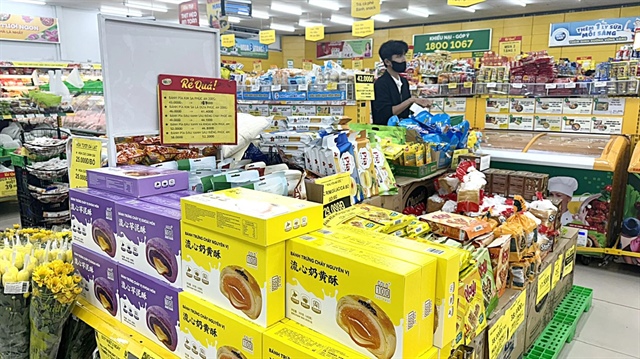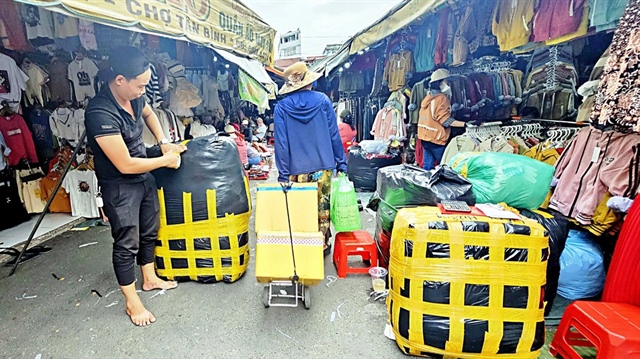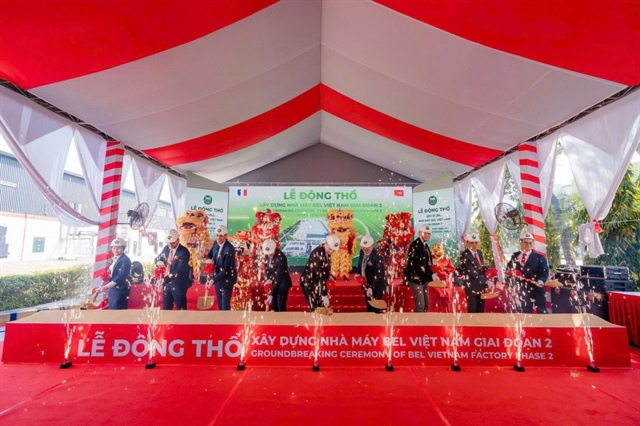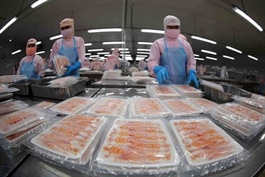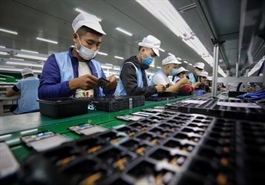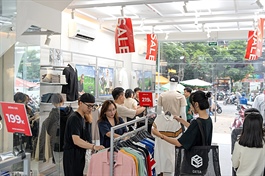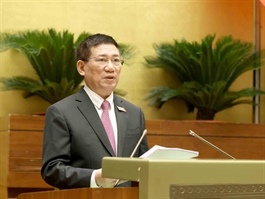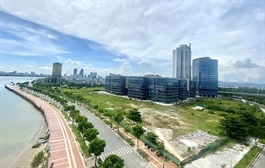Vietnamese traders prefer low-cost Chinese goods to locally-made products
Vietnamese traders prefer low-cost Chinese goods to locally-made products
As cheap Chinese goods continue to flood the Vietnamese market, traders are gradually abandoning locally-made products to opt for Chinese alternatives.
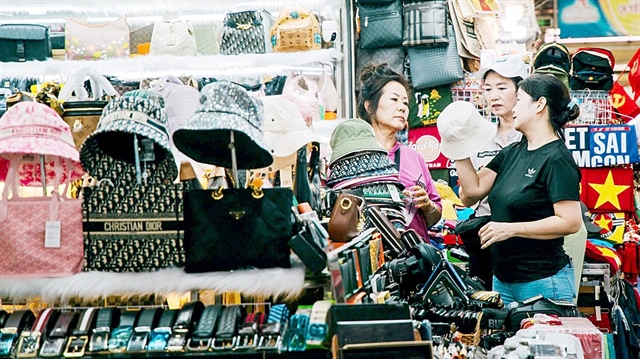
Many products from well-known brands originate in China and are attractive to Vietnamese consumers on account of their low prices. Photo: Thanh Hiep / Tuoi Tre |
The market share of Vietnamese goods is declining as Chinese products claim a larger portion of the market, driven in part by lower wholesale prices stemming from reduced production costs, local enterprises reported.
Chinese goods inundate traditional Vietnamese markets
Traditional markets across Ho Chi Minh City are stocked with clothing, footwear, and handbags imported from China.
Wholesale markets, such as Tan Binh Market in the namesake district and An Dong Market in District 5, are overflowing with ultra-inexpensive Chinese-made handbags, shoes, hair clips, and hair ties.
Dang Thi Le Nguyen, a clothing retailer at An Dong Market, confirmed that Vietnamese products used to account for 40-50 percent of goods at the market.
That market share has since been eroded by the influx of Chinese commodities over the past five to six years.
Nguyen estimated that Chinese items now account for 70-80 percent of the products on sale at the market and can be sold for prices ranging from five to 25 percent cheaper than their Vietnamese counterparts.
A locally-produced body dress, for example, sells for an average price of VND200,000-250,000 (US$8-10) at the market while a Chinese look-a-like typically sells for just VND150,000-200,000 ($6-8).
This phenomenon is not limited to wholesale markets, as Ba Chieu Market in Binh Thanh District and Thu Duc Market in Thu Duc City are experiencing a similar Chinese takeover.
According to Nguyen Thi Binh, a retailer at Thu Duc Market, locally-produced fashion goods are often inferior to Chinese products, so traders find it difficult to sell them, which has made Chinese goods a more attractive option for local merchants.
Near Tan Binh Market, the shift has begun to affect adjacent industries, with traders abandoning many of the tailors that once surrounded the market and, instead, turning to low-priced Chinese alternatives.
Chinese commodities a hit online
|
|
| Chinese cakes on display at a store in Thu Duc City, a district-level unit in Ho Chi Minh City. Photo: Bong Mai / Tuoi Tre |
Chinese products have become similarly popular online.
Thai Binh Son, head of the management board of Pham Van Hai Market in Tan Binh District, told Tuoi Tre (Youth) newspaper that the board has repeatedly invited e-commerce experts and TikTokers to help its vendors develop their online sales.
Pham Van Hai Market is home to 654 retailers, including 360 who focus on clothing and footwear products.
Those numbers, however, have begun to shrink as traders leave the market because competition from cheap Chinese merchandise has dampened sales.
Doan Thi Thu Ha, a representative of the Thu Duc Market management board, confirmed the influx of Chinese clothing and household appliances, saying that competition is unavoidable as consumers prefer Chinese products.
“Retailers have been spending less time on in-person sales to focus on selling Chinese goods through live streams. It’s a sad situation but there isn’t much we can do about it,” Ha admitted.
For their part, retailers have no choice but to prioritize sales above all else. After all, rent and utitlities do not pay for themselves.
But why are Vietnamese products so much more expensive than their Chinese counterparts?
Accoridng to a representative of the Shoes and Leather Association of Ho Chi Minh City, Vietnamese enterprises import production lines and more than 70-80 percent of their materials from China, including thread, zippers, fabrics, and leather.
Nguyen Thi Phuong, a fashion industry veteran with over 30 years of experience, said that the turning point for the industry came following COVID-19.
Between 2019 and now, her retail chain has closed 40 of its original 80 stores. Phuong is now even considering closing the remaining stores to focus solely on online channels.
Thanks to easy access to materials, modern machinery, and large-scale production, Chinese products are often 20-50 percent cheaper than similar commodities made in Vietnam, Phuong said.
Without effective policies, it is possible that many of Vietnam’s top fashion brands will bite the dust.
Solutions needed
|
|
| Traders in wholesale markets in Ho Chi Minh City are having difficulty staying afloat owing to the influx of low-cost Chinese products. Photo: N.Tri / Tuoi Tre |
Dr. Vo Tri Thanh, director of the Institute for Brand and Competitiveness Strategy, proposed piloting a program to tax imports valued at less than VND1 million ($39.4).
China's policies that support the transport of goods, combined with low prices and diverse product ranges, have tormented Vietnaemse firms.
As a result, local authorities should take measures to reduce pressure on local enterprises and scale down the volume of low-quality Chinese products, Thanh suggested.
However, it is also important to offer support to Vietnamese products and improve their competitiveness on e-commerce platforms.
Dr. To Hoai Nam, standing vice-chairman of the Vietnam Association of Small and Medium Enterprises, emphasized that management agencies should prioritize product quality.
He called for detailed regulations to establish clear standards for products consumed in Vietnam.
Vietnam is a signatory to many international agreements so it must both uphold such agreements and create protectionist policies to promote locally-produced goods, particularly in the agriculture, garment, footwear, and plastic industries.
Aside from legal measures, the country should call on consumers to prioritize Vietnamese goods, Nam added.


